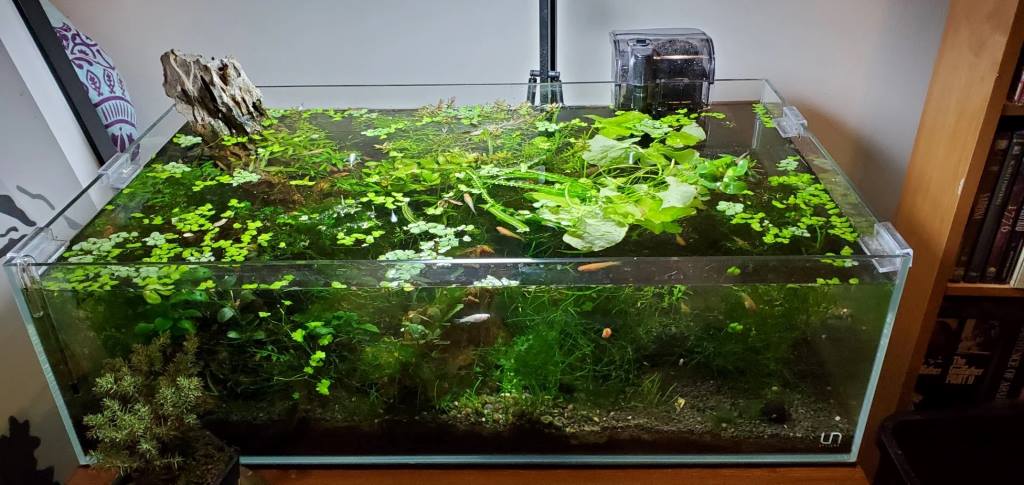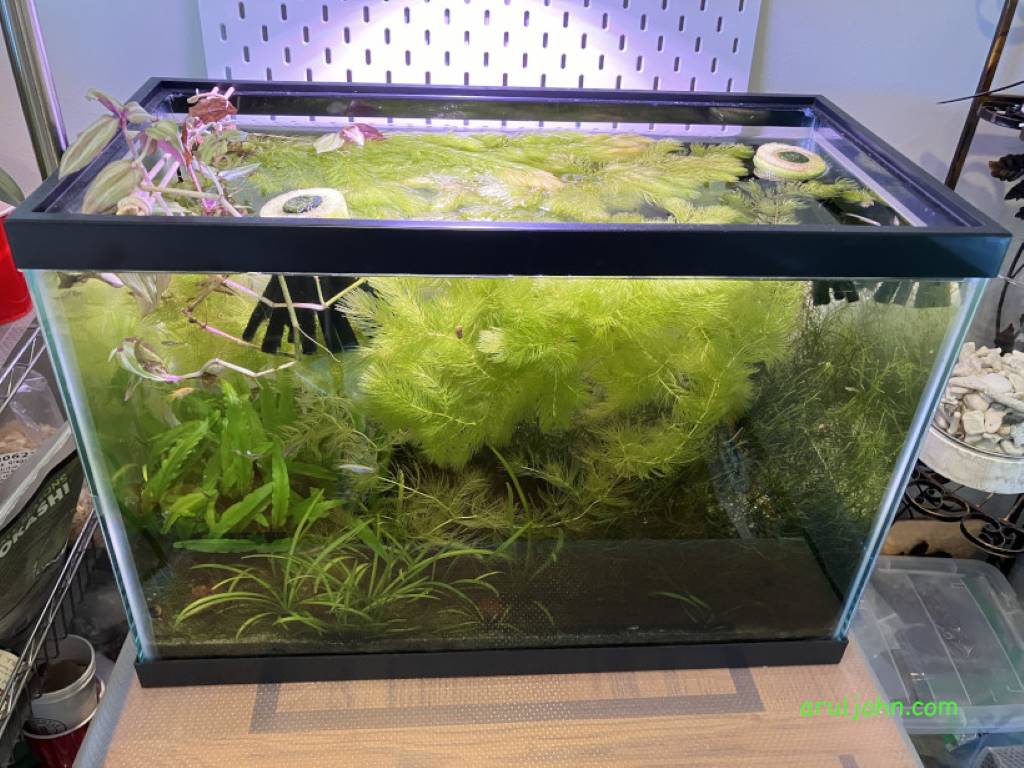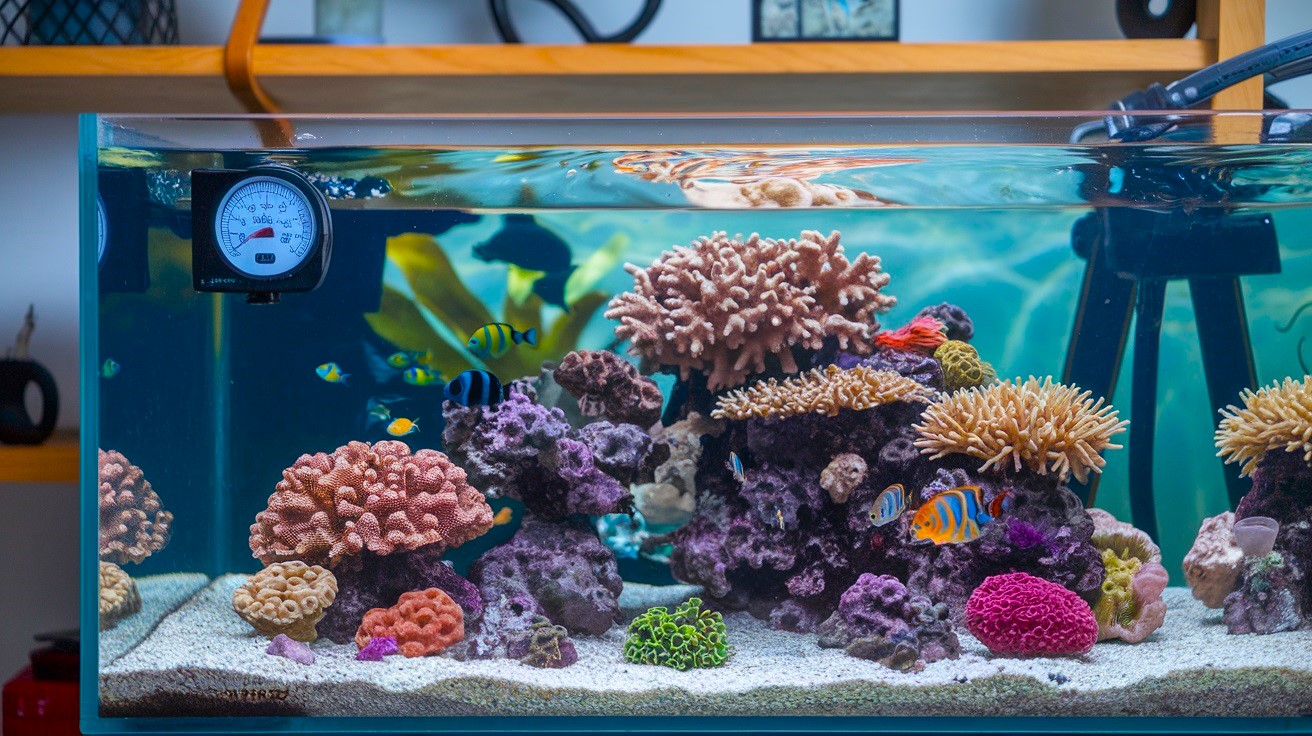Medaka rice fish, also known as Japanese rice fish, are vibrant, hardy freshwater fish perfect for outdoor tub setups. Their small size, adaptability, and striking colors make them an excellent choice for aquarists seeking a low-maintenance yet captivating aquatic hobby. This guide explores how to set up an outdoor tub for medaka, offering practical steps to educate beginners, demonstrate expert techniques, and fascinate readers with the beauty of these fish. Whether you’re a seasoned fishkeeper or new to the hobby, this blog post provides reliable advice to create a thriving medaka rice fish outdoor tub setup. Dive in to learn how to craft a serene, natural environment for your Japanese rice fish and enhance your outdoor space.
Why Choose Medaka Rice Fish for Outdoor Tubs?
Medaka rice fish (Oryzias latipes) are ideal for outdoor tubs due to their hardiness and adaptability. Native to East Asia, these fish thrive in rice paddies and slow-moving waters, tolerating temperatures from 32°F to 104°F and pH levels of 6.5–8.5. Their small size, about 1.5–2 inches, suits compact setups, making them perfect for small gardens or patios.
Their vibrant colors, like orange, yellow, and blue, add visual appeal. According to a 2023 study by the University of Tokyo, medaka’s resilience makes them a top choice for outdoor aquaculture. Additionally, their peaceful nature and ease of breeding fascinate hobbyists. I started my medaka tub last summer, and watching their playful swimming patterns transformed my backyard into a tranquil oasis.
This adaptability simplifies maintenance, but proper setup is key. A well-planned tub ensures their health and enhances their natural behaviors, creating a rewarding experience for fishkeepers.
Selecting the Perfect Tub for Medaka Rice Fish
Choosing the right container is critical for a successful medaka rice fish outdoor tub setup. Opt for a tub with at least 20 gallons (75 liters) capacity to provide ample swimming space. Food-grade plastic or fiberglass tubs are safe, preventing toxin leaching, unlike some plastics that degrade over time.
Consider a rectangular or oval shape, as these allow better water circulation and fish movement. A depth of 12–18 inches is ideal, letting medaka access the surface for oxygen. I used a 25-gallon fiberglass tub for my setup, which balanced space and manageability perfectly. Place the tub in partial shade to avoid overheating, as excessive sunlight can stress fish, per a 2024 aquaculture guide by NOAA.
Ensure the tub sits on a level, stable base to prevent tipping. Avoid areas near trees to minimize debris. This setup fosters a healthy environment, letting your Japanese rice fish thrive naturally.
Essential Equipment for a Medaka Outdoor Tub
Equipping your medaka rice fish outdoor tub setup requires minimal but strategic tools. A sponge filter or small submersible filter maintains water quality by removing debris and waste. Medaka prefer gentle water flow, so avoid strong pumps. An air pump with an airstone ensures oxygen levels, especially in warmer conditions.
A lid is crucial, as medaka are known jumpers. I learned this the hard way when one of my fish leaped out overnight! Floating plants like water lettuce can double as a natural cover. Use a water testing kit to monitor pH (7.0–8.0), ammonia, and nitrates. A 2023 NOAA report emphasizes regular testing for fish health.
For substrate, fine gravel or sand mimics their natural habitat. Avoid sharp materials to protect their delicate fins. This equipment setup is simple yet effective, ensuring your Japanese rice fish flourish with minimal effort.
Ideal Water Parameters for Medaka Rice Fish
Maintaining proper water conditions is vital for a healthy medaka rice fish outdoor tub setup. Medaka tolerate a pH of 6.5–8.5, but 7.0–8.0 is optimal. General hardness (GH) should be 6–12, and carbonate hardness (KH) 3–8. A Total Dissolved Solids (TDS) level of 150–300 ppm supports their health.
Temperature flexibility is a strength, with medaka thriving between 60–78°F. In my tub, I noticed they were most active at 70°F. Test water weekly to prevent ammonia or nitrite spikes. Perform 20% water changes every one to two weeks to maintain quality. Dechlorinate water before adding it to avoid harming fish.
Floating plants like hornwort oxygenate water and absorb nutrients, reducing maintenance. Regular monitoring and small adjustments keep the tub balanced, letting your Japanese rice fish display their vibrant colors and lively behaviors.
Planting Your Medaka Tub for Beauty and Function
Aquatic plants enhance both aesthetics and functionality in a medaka rice fish outdoor tub setup. Floating plants like water lettuce and frogbit provide shade, reduce algae, and offer hiding spots. Submerged plants like anacharis oxygenate water, supporting fish health.
I added water hyacinth to my tub, and it not only looked stunning but also kept nitrates low. Smooth rocks or driftwood add structure and hiding places. A 2024 study by the University of Tokyo highlights plants’ role in stabilizing pond ecosystems.
Use aquatic soil in baskets for rooted plants and fine gravel for substrate. Avoid overplanting to ensure swimming space. Plants create a natural habitat, encouraging medaka’s playful behaviors and making your tub a visually captivating centerpiece in your outdoor space.
Feeding Medaka Rice Fish in Outdoor Tubs

Medaka rice fish are omnivorous micropredators, thriving on a varied diet. Feed them crushed flakes, freeze-dried tubifex worms, or live mosquito larvae, which they love in outdoor tubs. I feed my medaka twice daily, using small portions to prevent overfeeding.
A balanced diet prevents nutrient deficiencies. According to NOAA, diverse feeding enhances fish longevity. Offer insect-based granules for protein and occasional live foods for enrichment. Overfeeding can pollute water, so monitor their consumption.
In my tub, mosquito larvae naturally appeared, delighting the fish. Feed sparingly, as medaka’s small size means they need less food than larger species. This approach keeps water clean and ensures your Japanese rice fish remain healthy and vibrant.
Breeding Medaka Rice Fish in Outdoor Tubs
Breeding medaka in an outdoor tub is rewarding and straightforward. Females are plumper with triangular anal fins, while males are slimmer with parallelogram-shaped fins. A group of six or more increases breeding success. Provide a spawning mop or dense plants like java moss for egg-laying.
Eggs hatch in 3–4 days at 72–78°F. Remove adults post-spawning to protect eggs. I saw fry in my tub within a week, a thrilling moment! A 2023 study by the University of Tokyo notes medaka’s rapid breeding cycle.
Maintain stable water conditions and ensure fry have access to sunlight for growth. Feed them powdered food or infusoria initially. This process lets you expand your medaka population, adding fascination to your outdoor tub setup.
Common Mistakes to Avoid in Medaka Tub Setup
Setting up a medaka rice fish outdoor tub setup is simple, but mistakes can harm fish. Here are key pitfalls to avoid:
- Overcrowding: Exceeding one fish per gallon stresses medaka and degrades water quality.
- No Lid: Medaka jump, risking loss. Always use a cover or floating plants.
- Poor Location: Full sun causes overheating; choose partial shade.
- Neglecting Water Tests: Unmonitored parameters lead to ammonia spikes.
I once placed my tub in direct sunlight, and the water hit 85°F, stressing my fish. Regular testing and shade fixed it. Following these tips ensures a healthy, thriving environment for your Japanese rice fish.
Benefits of Keeping Medaka in Outdoor Tubs
Medaka rice fish outdoor tub setups offer unique advantages:
- Low Maintenance: Hardy fish require minimal care.
- Aesthetic Appeal: Vibrant colors enhance outdoor spaces.
- Breeding Ease: Rapid reproduction expands your colony.
- Eco-Friendly: Plants and fish create a self-sustaining ecosystem.
My tub became a backyard highlight, drawing compliments from neighbors. The tranquility of watching medaka swim is unmatched. These benefits make medaka tubs a rewarding hobby for all skill levels.
Conclusion
A medaka rice fish outdoor tub setup combines beauty, simplicity, and fascination, transforming your outdoor space into a serene aquatic haven. By selecting the right tub, maintaining water quality, and adding plants, you create a thriving habitat for these hardy, colorful fish. Their adaptability and breeding ease make them perfect for beginners and experts alike. Start your medaka journey today to enjoy their vibrant hues and playful behaviors. Share your setup tips or questions in the comments below, or spread this guide to inspire others!
FAQs
What size tub is best for a medaka rice fish outdoor setup?
A 20-gallon (75-liter) tub is ideal, providing ample space for 6–10 medaka to swim comfortably.
Can medaka rice fish survive winter in an outdoor tub?
Yes, medaka tolerate 32–104°F but may need insulation or an indoor tank in freezing climates.
How often should I feed medaka rice fish in a tub?
Feed small portions of varied foods like flakes or larvae twice daily to avoid overfeeding.
What plants are best for a medaka rice fish tub?
Floating plants like water lettuce and submerged plants like anacharis enhance water quality and aesthetics.
Do medaka rice fish need a filter in an outdoor tub?
A sponge filter or submersible filter is recommended to maintain water quality and remove debris.




